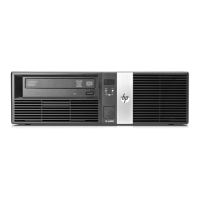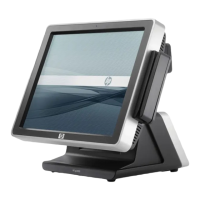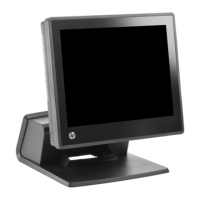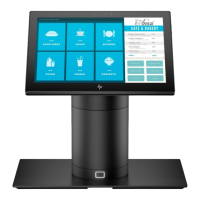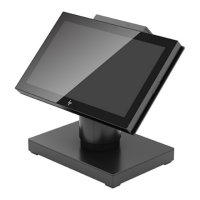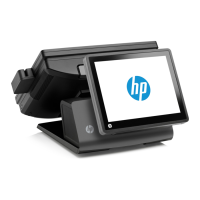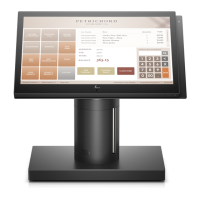configuration
parameters
or
any
other
means.
They
are
always
transmitted
and
your
programs
should include in-
put
commands explicitly for accepting
them.
The
keyboard
is
disabled ("locked")
until
the
status
is
sent.
Note
that
in
either
character
or
block
line
mode,
the
ter-
minal
sends
a
<CR>
(or8
<CR><LF>
if
auto
line feed mode is
enabled) following
the
completion code;
in
block page mode,
it
sends
a block
terminator
character
(as defined
in
the
Terminal
Configuration
menu
described
in
section II of
this
manual).
If
a
data
comm
error
occurs
during
the
transmission
of
the
data
record,
the
device
control
completion code is un-
predictable.
Data
comm
errors
are
reported
by
way
of
the
terminal
status
bytes described
in
section VIII of
this
manual.
COMPUTER TO
TERMINAL
DATA
TRANSFERS
When
either
or
both
of
the
printers
is selected
as
a
destina-
tion
("to") device, you
can
initiate
a
data
transfer
from a
program
executing
in
a
host
computer
to
the
printer(s)
by
using
the
following device control escape sequence:
<ESC>&p<ch8r8cter-count>W<record>
where
<character-count>
is
an
integer
within
the range
1-256
specifying the
number
of
characters
(bytes) in
<record>.
This is an optional
parameter. If present, then the record is
terminated when the specified
number
of
characters have been transmitted;
otherwise
the
record
is
terminated
when
the
256th data byte after the
"w"
is transmitted
or
by the first ASCII
<LF>
code,
whichever
occu rs first.
If
the
record is terminated by an
<LF>
the
<LD
is also passed
to
the printer.
<record>
is the data record
to
be transmitted.
This
escape sequence is recognized only
when
received over
a
data
comm line.
It
is ignored
if
entered
through
the
keyboard.
You
may
include
the
desired
destination
device assign-
mentes)
within
the
escape sequence by
using
the
"d" com-
mand
parameter.
You
may
also,
prior
to issuing
the
above
escape sequence, define
the
desired
destination
devices
either
locally
through
the
keyboard
or
programmatically
by
way
ofa
separate
device control «ESC>&p) sequence.
In
any
case,
the
only
destination
devices
that
are
recognized
by
this
type
of
data
transfer
operation
are
the
display (3d),
an
external
printer
(4d), and/or
the
integral
printer
(6d).
If
no
destination
devices
are
specified
within
the
above
escape sequence,
then
the
current
"to" device
assignments
are
used.
If
nothing
is
currently
selected
as
a "to" device,
the
data
record
is
accepted over
the
data
comm
port
and
then
is discarded
by
the
terminal
(also
an
"F"
is
returned
as
the
device control completion code.
Device Control
Binary
transfers
are
of
the
form <ESC>&p<character-
count>W<record>. ASCII
transfers
are
of
the
form
<ESC>
&pW<record>, where
an
ASCII
<LF>
or
the
256th
data
byte
terminates
the
record.
In
binary
transfers,
all
eight
bits
received
are
passed to
the
selected printer(s).
In
ASCII
transfers,
the
active
value
of
the
D8t8Bit
5 field
in
the
pertinent
data
communications
configuration
menu
determines
whether
seven
or
eight
bits will be
passed
to
the
selected printer(s).
If
the
escape sequence does NOT include a
<ch8r8cter-
c
ou
n t
>,
then
the
following apply:
• IfStripNulDel=YES
in
the
active
data
communications
configuration
menu,
the
data
comm
firmware
strips
all
<NULL>
and
<DEL>
codes from
the
incoming
data.
•
If
EnqAck=YES
in
the
active
data
communications
configuration
menu,
the
data
comm
firmware
strips
all
<
ENG>
codes from
the
incoming
data
and
responds to each
by
transmitting
an
<ACK>.
If
the
escape sequence includes a
<ch8r8ct
er-count
>,
then
the
following apply:
• IfEnqAck-YES
in
the
active
data
communications con-
figuration
menu,
an
<ENG>
code immediately following
the
"w"
and
preceding
the
data
record is
treated
as
part
of
an
Enq-Ack
handshake
(the
data
comm
firmware
strips
the
<
ENG>
code from
the
incoming
data
and
responds to
it
by
sending
an
<ACK».
•
After
the
optional
leading
Enq-Ack
handshake,
ALL
characters
received
are
treated
as
data
(including
<ENG>,
<ACK>,
<NULL>,
and
<DEL>
)
regardless
ofthe
setting
of
the
EnqAck
and
StripNulDel
configuration fields.
When
transferring
a
data
record from
the
host computer to
either
or
both
ofthe
printers
using
the
above device control
escape sequence,
the
remote
program
determines
whether
or
not
the
operation
was successfully performed
by
execut-
ing
an
I
NPUT
or
similar
instruction
that
requests
one
ASCII
character
from
the
terminal.
The
terminal
responds
by
sending
an
"S", "F",
or
"U".
An
"S" indicates successful
completion,
an"
F"
indicates
that
the
operation failed,
and
a
"u" indicates
that
the
terminal
operator
interrupted
the
data
transfer
by
pressing
_ . Note
that
these completion
codes
cannot
be suppressed
by
configuration
parameters
or
any
other
means. They
are
always
transmitted
and
your
programs
should include
input
commands explicitly for
accepting
them.
The
keyboard is disabled ("locked")
until
the
status
is sent.
Note
that
in
either
character
or block
line
mode,
the
ter-
minalsendsa<CR>
(ora<CR>
<LF>
if
auto
line feed mode is
enabled) following
the
completion code;
in
block
page
mode,
it
sends a block
terminator
character
(as defined
in
the
Terminal
Configuration menu).
If
a
data
comm
error
occurs
during
the
transmission
of
the
data
record,
the
device control completion code is un-
predictable.
Data
comm
errors
are
reported
by
way
of
the
6-3
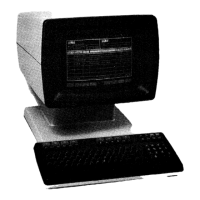
